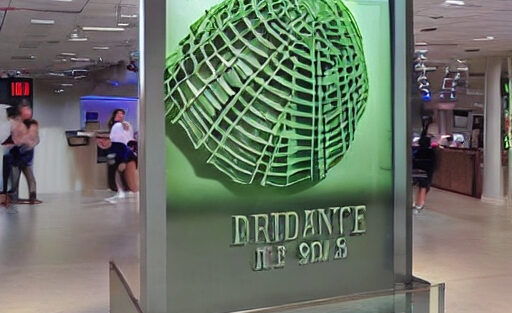In the world of signage, 3D office signage design and printing are making a significant impact. This innovative approach to signage not only adds depth and dimension to visual communication but also captures the attention of passersby. In this article, we will delve into the realm of 3D signage, exploring its various applications, design principles, and the remarkable influence it holds in today’s signage landscape.
Understanding 3D office Signage Design
3D office signage refers to signs that incorporate three-dimensional elements to create a visually striking and impactful presence. Unlike traditional flat signage, 3D signage adds depth, texture, and an extra layer of sophistication to various settings. This type of signage is versatile and can be used in a wide range of applications, both indoors and outdoors.
The Versatility of 3D Signage
1. Indoor 3D Signage
Indoor spaces benefit greatly from the presence of 3D signage. Whether it’s within an office building, a retail store, or an educational institution, indoor 3D signage can be used for a multitude of purposes. Here are some common applications:
Office Signage: 3D signage can be used to display company logos, mission statements, and room numbers, adding a touch of professionalism to the workspace.
Retail Signage: In retail environments, 3D signage can be used to highlight product displays, store names, and promotional messages, drawing customers’ attention and enhancing the shopping experience.
Educational Signage: Schools and universities can use 3D signage to display school names, department signs, and inspirational quotes, creating an engaging and immersive learning environment.
Outdoor spaces also benefit from the presence of 3D signage. Whether it’s for business identification or public messaging, outdoor 3D signage is both functional and visually appealing. Here are some outdoor applications:
Building Signage: Building exteriors often feature 3D signage with the company’s name or logo. These signs are not only informative but also serve as a powerful branding tool.
Pylon Signage: Pylon signage, commonly seen at the entrances of business parks and shopping centers, often incorporates 3D elements to make a bold statement and ensure visibility from a distance.
Wayfinding Signage: Directional and informational signs placed outdoors can benefit from 3D design, making them more conspicuous and guiding people effectively.
Designing Effective 3D Signage
Designing 3D signage requires a careful balance between aesthetics and functionality. Here are some key principles to consider:
1. Dimensional Elements
The three-dimensional elements should be thoughtfully integrated into the overall design. These elements can include raised lettering, sculptural elements, or even layered materials. Each element should have a purpose and contribute to the sign’s message.
2. Material Selection
Choosing the right materials is crucial for 3D signage. Materials such as acrylic, metal, wood, and foam can all be used to create different effects. The material should align with the intended look and feel of the signage.
3. Color and Contrast
Effective use of color and contrast can make 3D signage more visually appealing and readable. High-contrast lettering against the background ensures that the message stands out.
4. Lighting
Adding lighting to 3D office Signage Design is making a significant impact, captivating audiences and elevating the visual landscape of our environments. Whether it’s a 3D sign on the exterior of a building, can enhance its visibility, especially in low-light conditions or at night. Signage with light can create a dramatic and eye-catching effect.
5. Placement and Location
Consider where the 3D signage will be placed and its intended audience. Proper placement ensures that the signage serves its purpose and reaches the right people.
Innovations in 3D Signage
As technology advances, so do the possibilities for 3D signage. The integration of digital signage and 3D elements is becoming more common, allowing for dynamic and interactive displays. For instance, LED digital signage outdoor can combine the visual impact of 3D elements with real-time information updates, making it a valuable tool for businesses and organizations.
Compliance and Regulations
When designing and installing 3D signage, it’s essential to adhere to local regulations and guidelines, including those set forth by signage agencies like the Lagos State Signage and Advertising Agency in Nigeria. Compliance with these regulations ensures that the signage is not only visually appealing but also legally sound.
3D signage design and printing are revolutionizing the world of signage, providing businesses, institutions, and organizations with a powerful tool for visual communication. From enhancing brand identity to guiding people through spaces, 3D signage serves a wide range of purposes, both indoors and outdoors. By carefully considering design principles, materials, and lighting, businesses can create captivating 3D signage that leaves a lasting impression on customers, visitors, and passersby.
In a world where first impressions matter, office S3Dignage Design is making a significant impact, captivating audiences and elevating the visual landscape of our environments. Whether it’s a 3D sign on the exterior of a building, a dynamic digital display with three-dimensional elements, or an inspirational quote in a school hallway, 3D signage is a powerful tool for communication and expression. As technology continues to advance, we can expect even more innovative and captivating 3D signage solutions to emerge, further shaping the way we interact with and navigate our surroundings.

